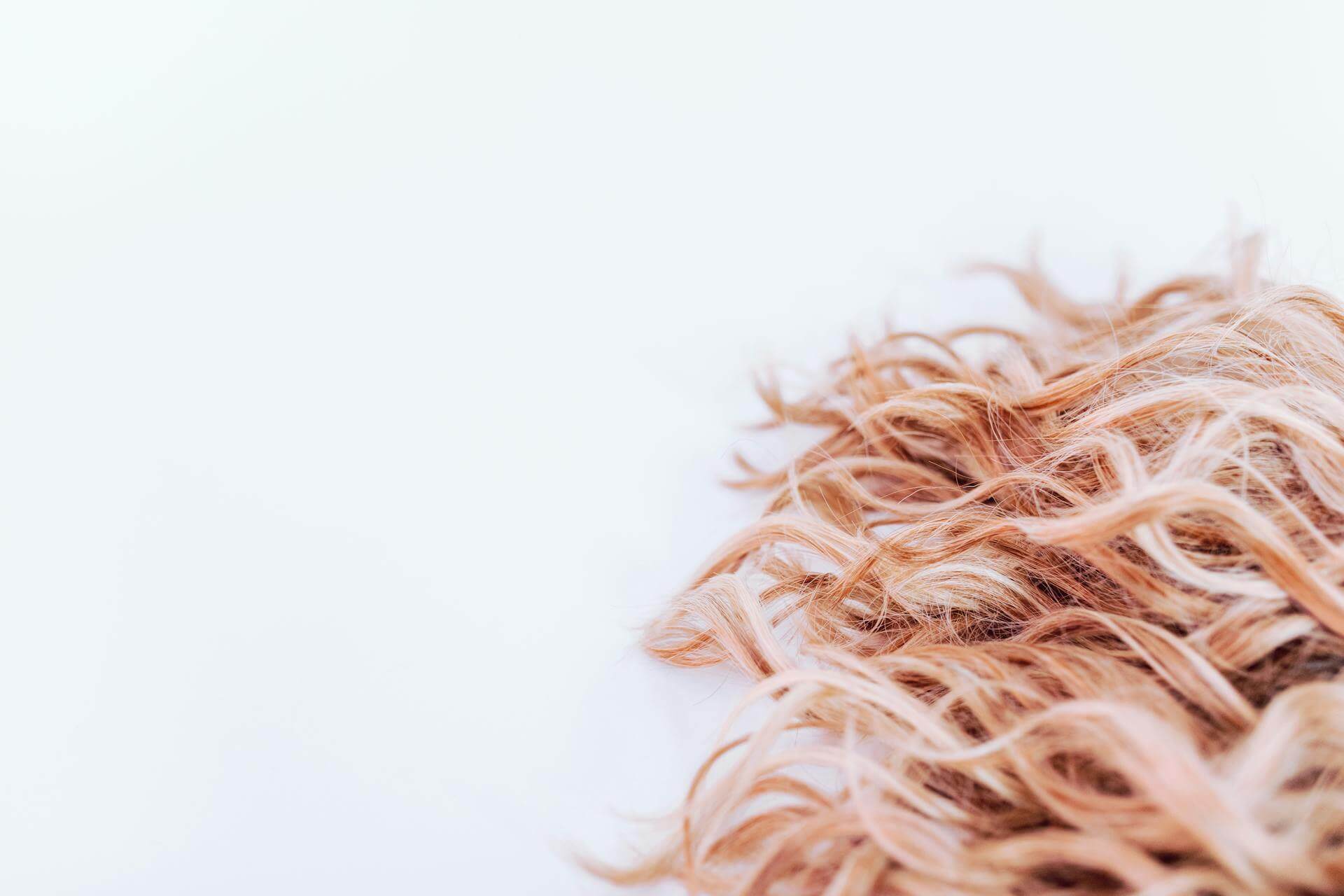Balding at a young age can be a stressful experience for both men and women. In their 20s, hair loss often occurs due to hereditary factors, affecting hormones and overall health. Poor nutrition and lifestyle choices can also contribute to early hair thinning. Understanding the early signs of balding and taking preventive measures are critical in maintaining hair health. Focusing on prevention, such as improving diet and reducing stress, can help manage the hormonal imbalances that accelerate hair loss. This blog will discuss various causes, including genetic predispositions and dermatology issues that affect hair follicles.
Addressing both hereditary and external factors becomes essential when dealing with premature hair thinning. Dermatology plays a crucial role in diagnosing the root causes of hair loss, such as hormonal changes or nutrition deficiencies. Early detection and prevention strategies are crucial to slowing down the process of balding. Treatments like Neograft hair restoration in Orange County offer a modern solution for those affected, providing a natural approach to restoring hair health while managing hereditary and lifestyle factors.
Understanding Hair Loss in Your 20s
Common Causes of Balding in Young Adults
Hair loss is not just a problem for older adults. Young people, especially men, may experience hair thinning and even baldness for many reasons. One major contributing factor is genetics, crucial in early hair loss. However, other things like stress, poor diet, and unhealthy lifestyle choices can also affect the body, leading to premature hair thinning. Hair loss can occur due to hormonal imbalances, autoimmune conditions, or external environmental factors.
In the case of alopecia areata, an autoimmune condition, the body’s immune system mistakenly attacks hair follicles, causing hair loss in specific parts of the scalp. Hair falls out in patches, which can be distressing, especially for young adults. Doctors often recommend various treatments depending on the stages of hair loss, including medications, topical treatments, or more advanced solutions like Neograft hair restoration.
It’s important to understand that many factors influence the health of your hair and skin, and it’s not just about genetics. Doctors emphasize that a combination of healthy habits, proper use of hair care products, and timely treatment can help. This article explores the causes of hair loss and how it manifests in different forms and stages, providing insights into the options available to those seeking treatment.
Role of Genetics and DHT
Genetics can determine whether you experience pattern baldness early in life. Male pattern baldness, caused by dihydrotestosterone (DHT), affects the hair follicles, leading to hair thinning and eventual loss. If you have a family history of baldness, it is possible to see symptoms such as a receding hairline and thinning hair in your early 20s.
In the context of male pattern baldness, you may notice changes in the strands of your hair as they become finer and less dense. This pattern of hair loss can often form a recognizable shape, such as a receding hairline or thinning crown, and it affects about 25% of men by age 25. The way hair falls out can create a noticeable pattern, which can be distressing and impact one’s confidence.
If you’re concerned about these changes, it’s essential to consult a doctor. They can help diagnose the issue and recommend appropriate treatments. Neograft hair restoration in Orange County offers a way to combat hair loss by restoring the hair naturally without invasive surgery. This method can help address hair loss patterns and potentially reverse or mitigate its effects.
Types of Hair Loss Conditions
Several types of hair loss conditions affect young adults. Some of the common ones include:
- Androgenic Alopecia (male or female pattern baldness)
- Alopecia Areata
- Traction Alopecia (due to tight hairstyles or braids)
- Telogen Effluvium (stress-related hair loss)
Early Signs of Balding
Recognizing the early signs of balding is crucial for seeking timely treatment. For example, if a man notices that his hair is thinning or losing more strands than usual, these could be early indicators of pattern hair loss. A typical initial sign is the gradual receding of the hairline or thinning on the top of the head. Sometimes, hair may begin to fall out more noticeably when you run your hand through it or use shampoo, such as Sunbum, which can exacerbate hair loss if not suited for your hair type.
Understanding the pattern of hair loss can be helpful. For instance, male pattern baldness typically follows a distinct pattern, which could be noticeable on the sides or crown of the head. If these symptoms are observed, addressing them promptly with appropriate hair loss treatment options is essential. Early intervention can significantly impact the effectiveness of treatments and help manage the progression of hair loss. Consulting with a specialist can provide personalized recommendations and potentially prevent further hair loss.
Receding Hairline
A receding hairline is one of the first signs of hair loss. This happens when hair starts to thin around the temples, giving the hairline a “M” shape. While this can be more common in men, women may also notice a receding hairline as they age. Neograft offers a hair transplant solution that can help restore the hairline and prevent further hair thinning.
Thinning at the Crown
Another common sign of balding is thinning around the crown of the head. This area is susceptible to hair loss due to follicle shrinkage, resulting in progressively thinner and shorter hair. Research has shown that early-onset balding can affect not only adults but also children and teens, potentially increasing the risk of future hair loss. Styles that put excessive tension on the hair, like tight ponytails or braids, can also contribute to thinning and hair loss.
Taking action early is essential if you notice a thinning crown in your 20s. Hair thickness can decrease due to genetic factors and lifestyle choices, including dietary habits. Eating a balanced diet rich in essential nutrients can support hair health and potentially reduce the risk of hair loss. Additionally, maintaining healthy eyebrows and avoiding harsh hair products can help keep your hair and scalp in optimal condition.
Taking proactive steps, such as consulting a specialist and considering treatment options, can improve your chances of managing and potentially reversing hair loss. Early intervention is critical to addressing the issue effectively and maintaining a fuller head of hair.
How Stress and Lifestyle Impact Hair Loss
The Role of Stress
Stress is a significant factor in hair loss. High-stress levels can trigger conditions like telogen effluvium, where hair follicles enter the resting phase, causing large amounts of hair to fall out. This hair loss is often temporary but can be concerning, especially for young adults.
During periods of stress, such as pregnancy or significant lifestyle changes, it’s essential to remember that the number of hairs in the shedding phase can increase. To manage stress-related hair loss, consider taking proactive steps. One tip is to focus on stress reduction techniques such as mindfulness, exercise, and relaxation practices.
Maintaining a healthy diet rich in essential nutrients can also support hair follicle health. Foods high in vitamins and minerals, such as iron, zinc, and biotin, can contribute to more robust hair growth. On the other hand, imbalances in hormones, such as elevated testosterone levels, can also impact hair health.
Consulting with a healthcare provider can provide valuable insights and personalized tips for those concerned about hair loss. Addressing stress and making lifestyle adjustments are critical in managing hair loss and supporting overall well-being.
Nutritional Deficiencies
A poor diet lacking essential nutrients such as vitamins and minerals can also contribute to hair thinning. Hair health depends on a balanced diet that supports proper hair growth. Deficiencies in nutrients like iron, zinc, and vitamin D can lead to hair shedding and thinning.
Impact of Smoking and Alcohol
Excessive smoking and alcohol consumption can speed up hair thinning. Certain habits can reduce blood flow to the scalp, depriving hair follicles of the oxygen and nutrients they need and inhibiting hair growth. Quitting these habits can help improve hair health and slow down the progression of hair loss.
Hair Loss Treatments for Young Adults
There are various treatments available for young adults experiencing hair loss. Early intervention can prevent further hair thinning from medications to hair transplant options.
Medications for Hair Loss
Medications like minoxidil and finasteride are commonly prescribed to slow down or stop hair loss. Minoxidil is a topical treatment that helps stimulate hair regrowth, while finasteride blocks DHT production, the hormone responsible for male pattern baldness.
Surgical Options: Neograft Hair Restoration
For those looking for a more permanent solution, Neograft hair restoration is a minimally invasive hair transplant procedure that uses Follicular unit extraction (FUE) To transplant hair from a donor area to the thinning or balding areas of the scalp. Neograft offers a natural-looking result without the need for stitches or incisions. Neograft Hair Restoration Orange County provides top-tier services for those struggling with hair loss in their 20s.
The Importance of Consulting a Dermatologist
Diagnosis and Assessment
Seeing a dermatologist is critical in diagnosing the cause of your hair loss. Dermatologists can thoroughly examine your scalp, hair, and follicles to determine the root cause of hair thinning.
Tailored Treatment Plans
Once a diagnosis is made, your dermatologist can create a tailored treatment plan to address your condition. Whether medication, hair care products, or hair restoration, a personalized approach can make all the difference.
Can Women Experience Balding at 20?
While baldness is more commonly associated with men, women can also experience hair loss in their 20s. Female pattern baldness affects the central part of the scalp, causing overall hair thinning rather than a receding hairline. Women who notice a change in their hair volume or density should seek medical advice early.
Lifestyle Changes to Prevent Hair Loss
Making lifestyle changes can significantly impact hair health. A holistic approach that includes a healthy diet, regular exercise, and effective stress management can all help prevent premature hair loss and support overall well-being. A well-balanced diet rich in essential nutrients such as iron, zinc, biotin, and vitamins A and D is crucial for maintaining strong hair and promoting growth. Staying hydrated by drinking plenty of water also supports hair health.
Regular physical activity improves cardiovascular health and enhances circulation, delivering essential nutrients and oxygen to the scalp, which benefits hair follicles. Additionally, managing stress through mindfulness, meditation, and relaxation techniques is vital, as high-stress levels can trigger conditions like telogen effluvium, leading to increased hair shedding. For those experiencing persistent hair loss, it’s important to consult a healthcare provider to explore potential underlying medical conditions or hormonal imbalances.
Treatments, including prescription medications, may be necessary but have potential side effects, so professional guidance is essential. By making these informed lifestyle changes and seeking appropriate medical advice, individuals can significantly improve their chances of maintaining healthy hair and overall well-being.
Diet and Supplements
Consuming a balanced diet rich in vitamins and minerals can support hair growth. Supplements like biotin and omega-3 fatty acids may also contribute to stronger, healthier hair.
Scalp Care and Hair Health
Regular scalp massages can increase blood circulation, promoting hair growth. Using the right hair care products and avoiding harsh chemicals can prevent damage and hair thinning.
Neograft Hair Restoration in Orange County
For those experiencing early signs of balding, Neograft hair restoration in Orange County offers a state-of-the-art solution. Neograft uses follicular unit extraction (FUE) technology to transplant healthy hair follicles, creating a natural appearance without visible scarring.
How Neograft Works
The Neograft procedure is a minimally invasive hair transplant that carefully extracts hair follicles from the donor area (usually the back of the scalp) and places them in the thinning or balding areas. This advanced method ensures the results look natural and last long-term.
Benefits of Neograft
The benefits of Neograft hair restoration include:
- No stitches or scarring
- Faster recovery times
- Natural-looking results
- Long-lasting hair regrowth
Conclusion
Early hair loss in your 20s can be distressing, but with modern treatments like Neograft Hair Restoration in Orange County, there are effective ways to regain your confidence. By recognizing the signs of balding early and seeking professional advice, you can take control of your hair health and explore the best treatment options available. Whether through medication, lifestyle changes, or hair restoration, the key is to act early.
For more information on how Neograft can help, contact us to schedule a consultation with one of our experts. Don’t wait—start your journey to a fuller head of hair today!
Understanding Hair Loss in Your 20s: Causes, Signs, and Effective Treatments – FAQs
1. What are some effective home remedies for early hair loss?
Home remedies like essential oils (e.g., rosemary or peppermint oil), aloe vera, and scalp massages can promote blood circulation and may support hair health.
2. How often should I wash my hair if I’m experiencing hair loss?
It’s generally recommended to wash your hair 2-3 times a week to maintain scalp health without stripping essential oils, but individual needs may vary based on hair type and scalp condition.
3. Are there any specific vitamins or supplements that can help prevent hair loss?
Supplements such as biotin, vitamin D, and omega-3 fatty acids are often recommended to support hair health and may help prevent further hair loss.
4. What are the psychological effects of experiencing hair loss at a young age?
Young adults facing hair loss may experience anxiety, low self-esteem, or depression, which can further impact their overall well-being and mental health.
5. Can women experience balding in their 20s?
Yes, women can experience hair thinning, often due to female pattern baldness, which affects the central part of the scalp.
6. How does nutrition impact hair health?
Poor nutrition can lead to deficiencies in essential nutrients like iron, zinc, and vitamin D, which are crucial for maintaining healthy hair.
7. What treatments are available for young adults experiencing hair loss?
Treatments include medications like minoxidil and finasteride, lifestyle changes, and advanced solutions like Neograft hair restoration.
8. What is Neograft hair restoration, and how does it work?
Neograft is a minimally invasive hair transplant procedure that uses follicular unit extraction (FUE) technology to restore hair without scarring.
9. How can stress management help with hair loss?
Stress management techniques like mindfulness, exercise, and relaxation can help reduce stress-related hair loss by preventing hair follicles from entering the resting phase prematurely.
10. When should you consult a dermatologist about hair loss?
You should consult a dermatologist when you notice excessive hair shedding or thinning to determine the cause and explore treatment options.















Recent Comments